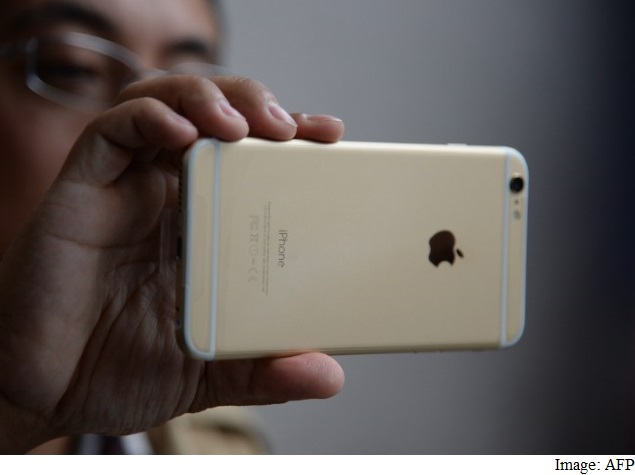- Home
- Science
- Science News
- New Smartphone Technology to Help Visually Challenged People 'See'
New Smartphone Technology to Help Visually-Challenged People 'See'

Specialists in computer vision and machine learning based at the University of Lincoln, UK, funded by a Google Faculty Research Award, are aiming to embed a smart vision system in mobile devices to help people with sight problems navigate unfamiliar indoor environments.
Based on preliminary work on assistive technologies done by the Lincoln Centre for Autonomous Systems, the team plans to use colour and depth sensor technology inside new smartphones and tablets to enable 3D mapping and localisation, navigation and object recognition.
The team will then develop the best interface to relay that to users - whether that is vibrations, sounds or the spoken word.
"This project will build on our previous research to create an interface that can be used to help people with visual impairments," said Project lead Dr. Nicola Bellotto, an expert on machine perception and human-centred robotics from Lincoln's School of Computer Science.
"There are many visual aids already available, from guide dogs to cameras and wearable sensors. Typical problems with the latter are usability and acceptability.
"If people were able to use technology embedded in devices such as smartphones, it would not require them to wear extra equipment which could make them feel self-conscious.
"There are also existing smartphone apps that are able to, for example, recognise an object or speak text to describe places. But the sensors embedded in the device are still not fully exploited.
"We aim to create a system with 'human-in-the-loop' that provides good localisation relevant to visually impaired users and, most importantly, that understands how people observe and recognise particular features of their environment," said Bellotto.
The research team, which includes Dr Oscar Martinez Mozos, a specialist in machine learning and quality of life technologies, and Dr Grzegorz Cielniak, who works in mobile robotics and machine perception, aim to develop a system that will recognise visual clues in the environment.
This data would be detected through the device camera and used to identify the type of room as the user moves around the space.
A key aspect of the system will be its capacity to adapt to individual users' experiences, modifying the guidance it provides as the machine 'learns' from its landscape and from the human interaction.
So, as the user becomes more accustomed to the technology, the quicker and easier it would be to identify the environment.
For the latest tech news and reviews, follow Gadgets 360 on X, Facebook, WhatsApp, Threads and Google News. For the latest videos on gadgets and tech, subscribe to our YouTube channel. If you want to know everything about top influencers, follow our in-house Who'sThat360 on Instagram and YouTube.
Related Stories
- Samsung Galaxy Unpacked 2025
- ChatGPT
- Redmi Note 14 Pro+
- iPhone 16
- Apple Vision Pro
- Oneplus 12
- OnePlus Nord CE 3 Lite 5G
- iPhone 13
- Xiaomi 14 Pro
- Oppo Find N3
- Tecno Spark Go (2023)
- Realme V30
- Best Phones Under 25000
- Samsung Galaxy S24 Series
- Cryptocurrency
- iQoo 12
- Samsung Galaxy S24 Ultra
- Giottus
- Samsung Galaxy Z Flip 5
- Apple 'Scary Fast'
- Housefull 5
- GoPro Hero 12 Black Review
- Invincible Season 2
- JioGlass
- HD Ready TV
- Laptop Under 50000
- Smartwatch Under 10000
- Latest Mobile Phones
- Compare Phones
- Moto G15 Power
- Moto G15
- Realme 14x 5G
- Poco M7 Pro 5G
- Poco C75 5G
- Vivo Y300 (China)
- HMD Arc
- Lava Blaze Duo 5G
- Asus Zenbook S 14
- MacBook Pro 16-inch (M4 Max, 2024)
- Honor Pad V9
- Tecno Megapad 11
- Redmi Watch 5
- Huawei Watch Ultimate Design
- Sony 65 Inches Ultra HD (4K) LED Smart TV (KD-65X74L)
- TCL 55 Inches Ultra HD (4K) LED Smart TV (55C61B)
- Sony PlayStation 5 Pro
- Sony PlayStation 5 Slim Digital Edition
- Blue Star 1.5 Ton 3 Star Inverter Split AC (IC318DNUHC)
- Blue Star 1.5 Ton 3 Star Inverter Split AC (IA318VKU)

















